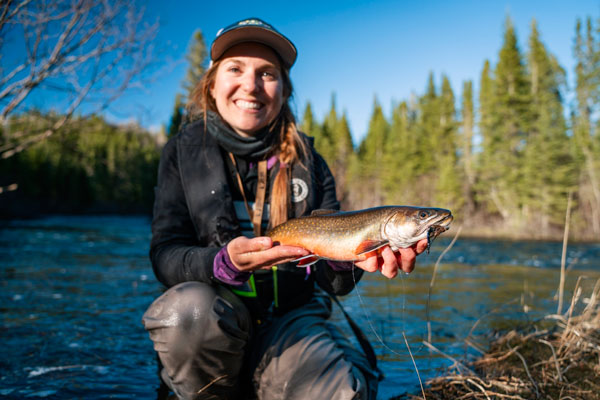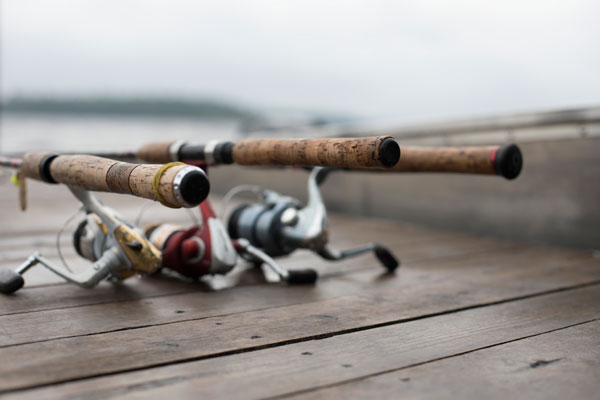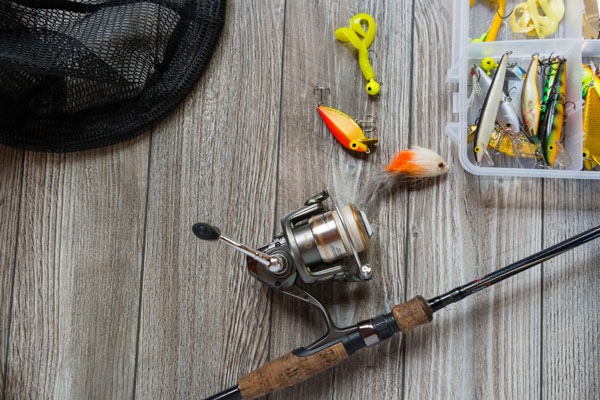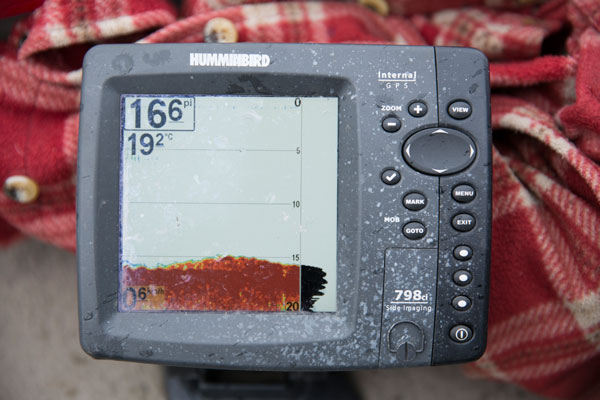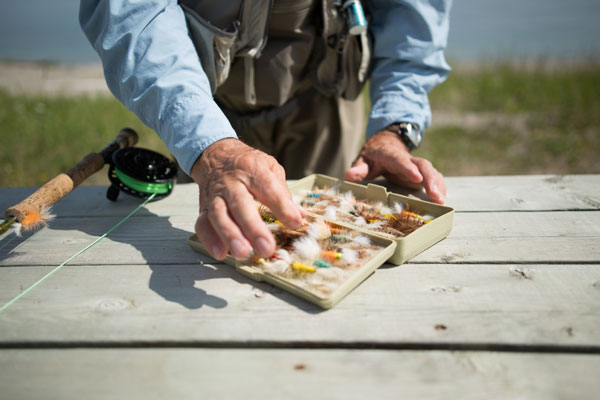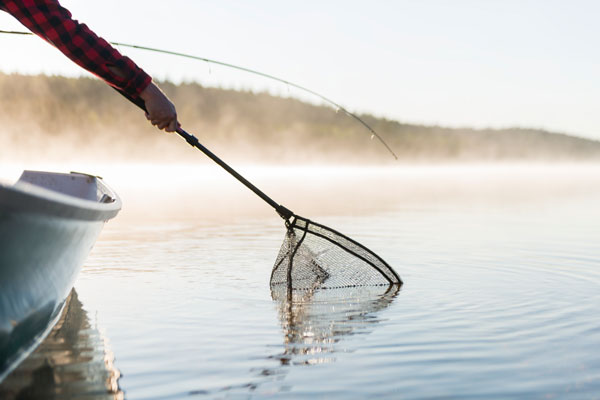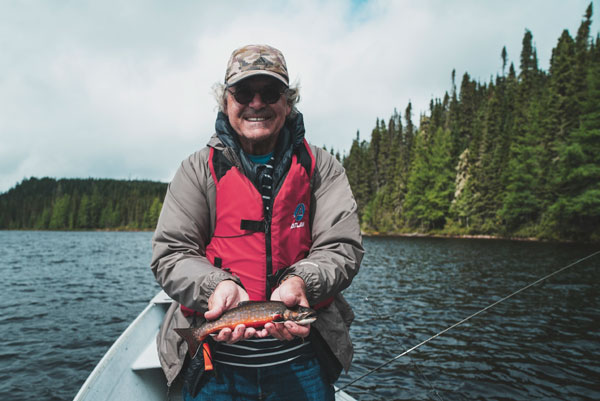How to up your fishing game
For years, a rod, a few lures, and a jar of worms were enough to keep you happy. You'd cast your line and hope the fish would respond, enjoying the view while you waited. What a thrill it was when your line went taut! Want to experience the excitement of a great catch more often? Here are some tips to take your game up a notch.
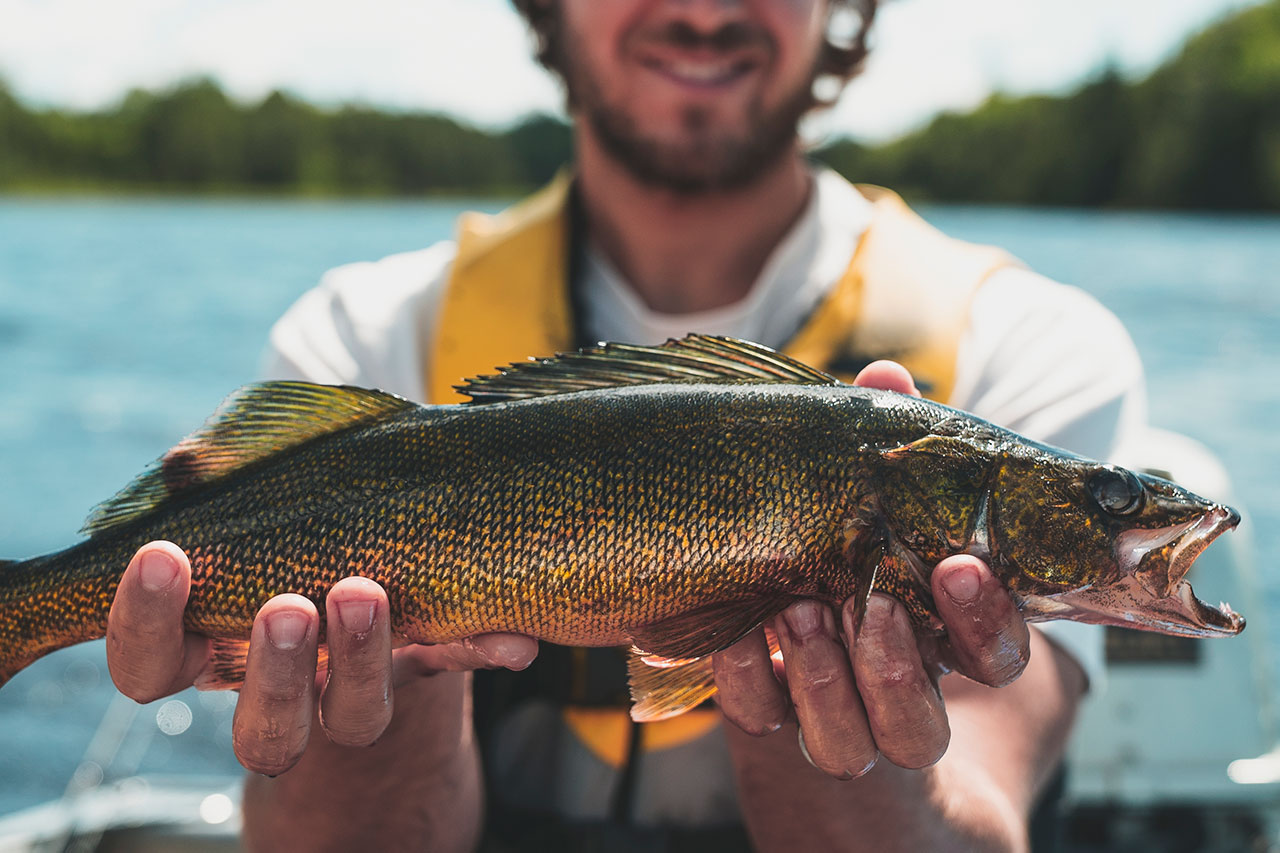 Réserve faunique La Vérendrye
Réserve faunique La Vérendrye
Psychology 101
There are two things fish love more than anything else in the world: fresh water (richer in oxygen) and an abundant food supply. That's why they’re particularly fond of waterway "structures." Points of land, docks, and islands of vegetation are places that provide shade and shelter for numerous species that fish enjoy, including leeches, mayflies, crayfish, insect larvae, and many others besides. Look for such structures on the lake; they’re good starting points from which to cast your line.
The same logic applies to rivers: meanders, grassy thickets, pools, and large rocks allow fish to feed, to shelter from the current, and to conserve their energy.
Fly fishing or light tackle?
If you have both types of equipment, you may be wondering which one to choose for the situation. Suggestion: always bring along both rods and start by checking out the water. If fish are jumping to the surface, pull out your fly rod. Otherwise, fish with a light spinning rod or troll.
The time of year is also important. At the beginning of the season, when the lakes have just thawed and there are no hatching insects yet, fish food is found more toward the bottom. So light casting is the ticket. (You can still fly fish but use a "sinking" line that lets the lure sink lower. ) As the season progresses, insect larvae, flies, mosquitoes, and grasshoppers attract fish to the surface. Fly fishing, with its very natural presentation of artificial bait, is a good option at this point.
In the middle of a heat wave, after several days of strong sunshine, it’s quite possible that the fish will seek shade at the bottom of the water. Under these conditions, it’s more difficult to get them to respond by presenting a surface lure, especially in the middle of the day. Instead, opt for light casting, trolling, or handline fishing.
And remember that fish are fickle creatures; you can't 100% predict how they’ll behave... If you have no luck with a given technique or lure, simply change your tack!
What should we attach to the end of the line?
We consider living things (worms or leeches) to be bait, while lures are by definition artificial. There is a wide range of lures, varying in shape, size, weight, color, and function. The idea is to accurately imitate the preferred food of the fish. Early in the season, their prey is usually dark, so lures in shades of black, brown, or forest green really hit the spot. As summer sets in, more insects appear and more colorful lures can be brought out. But this is not a hard and fast rule: first of all, you have to observe and prospect the water to see what the fish respond to best that day.
A good tip when you come to fish at a Sépaq destinations: stop by the visitors centre and query the staff on site. In addition to knowing the water like the back of their hand, these experts exchange with many other anglers and can therefore provide valuable advice. More often than not, the most promising lures are also sold on site.
Probing the depths of the lake
How can you find out at what depths the fish are lurking? “If you fish from a motorboat, the easiest way is to equip yourself with a sonar," says André Arteau, information technician at Sépaq and a fishing enthusiast for over 35 years. "There are now affordable and very efficient models. Mine cost about a hundred dollars and it has served me well for the past 10 years. The sonar won’t get the fish to bite, but it's a tool that lets you know how deep to dangle your lure." It's a great gift suggestion, to give or to ask for...
In the absence of sonar, we go by trial and error. Place your lure at a certain depth and troll. No results after 15 to 30 minutes? Simply try a different depth.
Fly fishing in rivers
On the river, fly fishers face an additional challenge: the current. So it’s better to aim for a quieter place, a pool for example. Here again, the choice of flies depends on the food naturally present in the environment. Try a few different flies to see what works best. (Here’s a hot tip: If tying flies is not your favorite pastime, you'll be happy to know that there are flies with individual ties that are knotted once at the beginning of the season, and then can be easily tied and untied).
Is it better to fish from the shore or with your feet in the water? When the current is not too strong, André Arteau likes to put on his waders and enter the river. "It's ideal for casting because you have more clearance. You also have better vision and you cover more territory. What’s more, it allows you to go to strategic places that you can't access from the shore. The important thing is not to enter the water directly in these strategic places: the fly must land there, not our feet.”
To discover : The Rivière-Madeleine salmon river in Réserve faunique des Chic-Chocs!
Long live the rain!
Many people are disappointed when the rain starts to fall. But it's a great time to go fishing! In addition to lowering the temperature, heavy rains raise the water level and bring in additional food from the tributaries. The winning conditions are then met for the fish to be very reactive, as André Arteau enthusiastically states. "I've done my best fishing in heavy rain. When the fish are biting, you forget that it's raining, because you're not waiting; you're where the action is!" He recalls a trip to Réserve faunique Ashuapmushuan last summer. It was raining like crazy, to the point of having to bail out the boat every five minutes. But that day was the most exciting of his season: every time he cast his line, a walleye was biting! Don't be intimidated by the vagaries of the weather; often all you need is a raincoat, multi-layered clothing, and a full thermos to have a magical time.
Summing up
- The beginning of the season is favorable to big catches, because the water is fresh and food is scarce. The fish are active and hungry, which is a winning combination for fishing. So put on your tuque and gloves; nature is beautiful in springtime!
- Before eating your catch, examine their stomach contents. Small fish? Crayfish? Insects? Having a better idea of their favorite meal at this time of year will help you refine your imitation the next time you set your hook.
- After applying sunscreen or insect repellent, be sure to clean your hands before handling your equipment. Fish have a good sense of smell and these scents put them off.
- They also have an excellent motion detector. On sunny days, especially if the water is clear and shallow, avoid getting too close to where the fish are hanging out. A quick movement of your arm while casting may be enough to scare them away...
- As the light passes through the water toward the depths, it decomposes and gradually loses the colors of its spectrum. First the red, then the orange, yellow, green, and blue. Indigo and violet are the last colors perceived by fish at the bottom. This is good to know when choosing a lure or a spinner.
- To increase your success rate, Sépaq has designed bathymetric maps indicating favorable fishing sites on some 500 of the most popular lakes in the network. In total, more than 2,850 precise locations have been identified by our experienced guides. A first in the industry! These maps are available free of charge; you can download them here.

About Karine Husson
Born in Abitibi in the midst of spruce trees (and blackflies), Karine spent her childhood in the woods, alongside a gold prospector father who introduced her to the thousand and one faces of the wilderness. After 15 years at an advertising agency, she decided to change pace to spend more time... outside. She now lives in Mont-Sainte-Anne and divides her days between her dogs, her horses, her skis, and her bike. The rest of the time, she unearths beautiful stories to tell and puts her pen - or her keyboard - at the service of topics that really matter.
